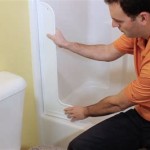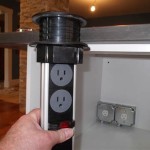Kitchen cabinets can be an expensive investment, but they don’t have to be replaced every few years. With proper maintenance, they can be restored to like-new condition and last for many years. Restoring kitchen cabinets is a great way to give your kitchen a facelift without the cost of a full renovation. In this article, we’ll look at the steps involved in cabinet restoration and the materials needed to do the job.
Preparing the Cabinets for Restoration
Before you start the restoration process, it’s important to properly prepare the cabinets. This includes removing any hardware, such as knobs and hinges, and cleaning the surfaces of the cabinets. The best way to clean the cabinets is to use a mild detergent and warm water, followed by a thorough rinse. Once the cabinets are clean, you can begin the restoration process.
Repairing Damaged Cabinets
If your cabinets are in need of repair, this should be done before restoration. Minor repairs, such as filling in scratches and dents, can be done by yourself. More extensive repairs, such as replacing damaged sections, may require the help of a professional. Once the repairs are complete, the cabinets should be sanded to provide a smooth surface for the restoration process.
Choosing the Right Paint or Stain
The type of paint or stain you choose will depend on the look you’re trying to achieve. If you want a classic look, consider using a stain. If you’re looking for a more modern look, then a paint is your best option. When selecting a paint or stain, make sure to choose one that is specifically designed for kitchen cabinets. This will ensure that the finish is durable and long-lasting.
Applying the Paint or Stain
Once you’ve chosen the paint or stain, it’s time to apply it. Begin by applying a coat of primer to the cabinets. This will help the paint or stain adhere better and provide a better finish. Once the primer is dry, the paint or stain can be applied. Be sure to use a brush or roller specifically designed for the type of finish you’re using. Brush on the paint or stain in long, even strokes. Allow the first coat to dry before applying a second coat. Once the second coat is dry, the cabinets can be reinstalled.
Maintaining the Cabinets
Once the cabinets are restored, it’s important to maintain them. Regular cleaning with a mild detergent and warm water will help keep the cabinets looking like new. It’s also important to keep the cabinets free from grease and food particles. This will help prevent staining and other damage. With proper maintenance, your restored cabinets can last for many years.















Related Posts








